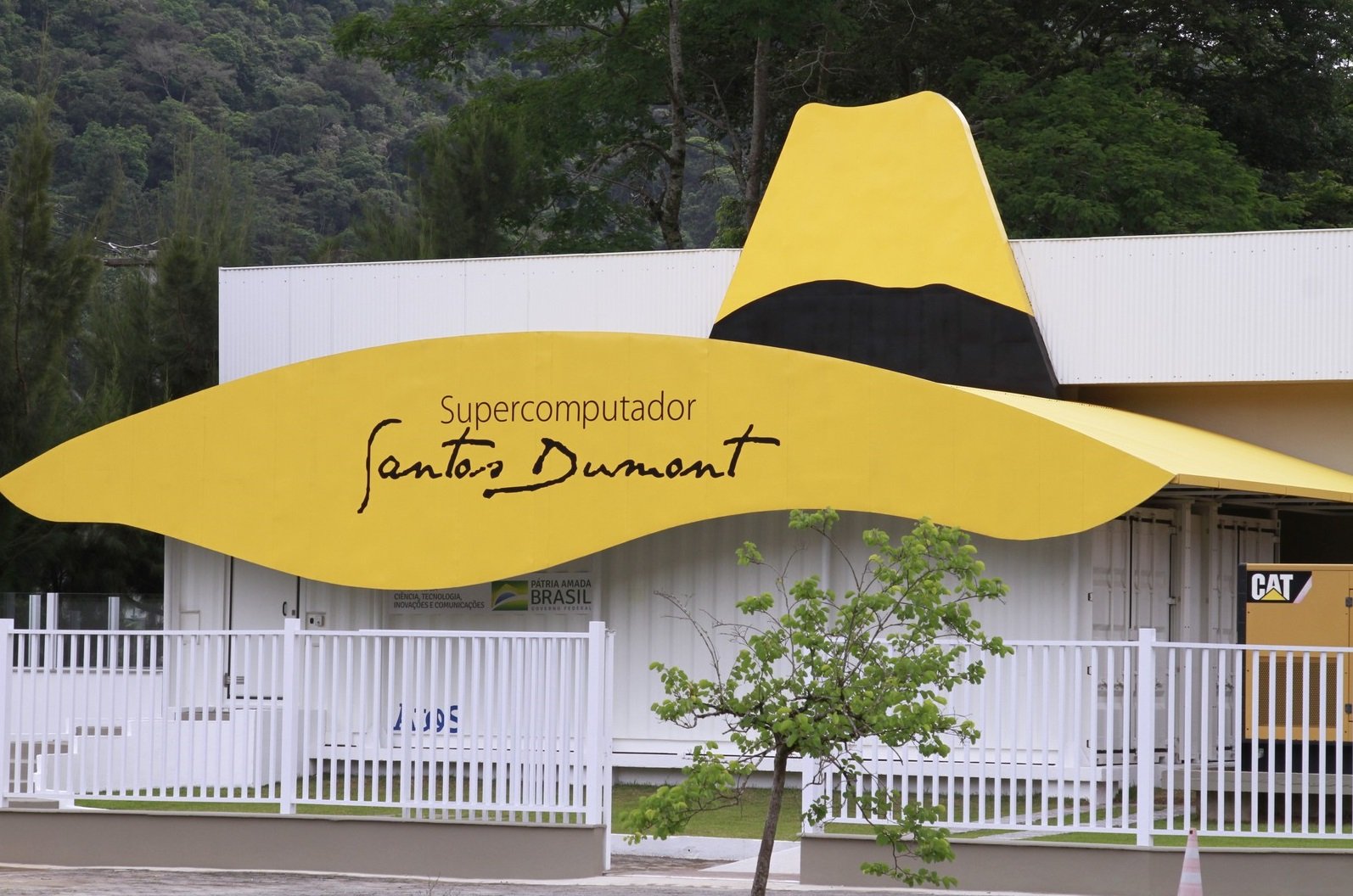Petrópolis, a city in the mountains of Rio de Janeiro, has one of the greatest jewels of Brazilian science. His big yellow hat catches the attention of passers-by on Avenida Getúlio Vargas. Santos Dumont supercomputer.
The machine, which is under the supervision of the National Scientific Computing Laboratory LNCC, is among the 6 machines in Brazil among the Top 500 in the world, a ranking that evaluates the processing power of supercomputers.
Brazilian supercomputer
The idea of hosting a supercomputer in Brazil is not new. According to LNCC researcher Wagner Leo, it has been around since the 1970s and persisted for many years. In the 1990s, the country received a donation of an IBM model 3090.
On that occasion, the laboratory was transferred to a location in Petrópolis, where it could better house the necessary infrastructure for the machine. But time passed quickly and technology improved and made the old 3090 obsolete.
In 2014, the old dream came true with a BRL 60 million project from the Ministry of Science and Technology. Santos Dumont was negotiated with the French company ATOS/BULL and today acts as the central node of the National High Performance Machining System. It was the first computer in the country to run at peta scale (capable of processing more than 10¹5 operations per second).
In 2019, Petrobras contributed 50 million through the Libra consortium to realize the upgrade and expansion that increased its capacity by 5x. Today it ranks 426th among the largest machines in the world.
It has more than 36,000 CPU cores, most of which are multi-core models, and 5.1 petaflops of installed capacity, with parallel processing architecture in a hybrid configuration of compute nodes.
Why does the Santos Dumont supercomputer have this name?
Wagner Leo, information technology coordinator at LNCC, says researchers say the new supercomputer is an airplane, it’s going to take off. Therefore, the first name chosen for the machine was 14 Bis.
But manufacturers warned that the use of numeric numbers could cause incompatibility issues in software licenses in the future, and the researchers later reached out to Santos Dumont, who pays homage to the Brazilian inventor known as the father of aviation.
“On opening day in France in the first half of 2015, the equipment would be delivered and the engineers would write the generic name of Felix on the machine,” says Leo. “I said the machine has a name, it’s Santos Dumont, and it’s a great pleasure because it’s an homage not only to Brazil, but also to the French.”
weight infrastructure
Santos Dumont weighs 60 tons. Wagner explains that financing a supercomputer isn’t just about buying it. It is necessary to create an infrastructure that can support the device.
A computer of this size needs to be water-cooled, sometimes in two types, room temperature and ice cold. LNCC also has three generators of 750 kVA each and five UPS of 350 kVA to support the equipment.
All of Santos Dumont’s work included design, substation construction, seamless, generators, water towers, cooling, support base, and the iconic hat, a nod to the inventor who gave it its name.

In addition, there are recurring costs. According to the coordinator, more than R$650,000 per month is spent at Santos Dumont, most of which is spent on maintaining the supercomputer.
Santos Dumont is a leap forward for Brazilian science
Antonio Tadeu Gomes is coordinator of the research sector at LNCC. Having the opportunity to be one of the first users of the supercomputer, he says the experience was fascinating.
“Since I’ve had access to Santos Dumont, my perspective on what large-scale computing is has completely changed,” he says. “Until 2015 there was nothing like it in Brazil”. Today, 300 projects from 16 states in the country are working on the device.
Materials science and health are the two fields that make the most use of the supercomputer and have numerous applications, from the development of vaccines, antibiotics and other drugs to compounds of industrial importance such as resistance and transparency.

One of the most striking discoveries, involving Santos Dumont, was the experimental vaccine against Zika virus in 2018. The study identified a specific protein sequence of the virus that allowed the development of vaccines that are still being tested.
In 2020, the supercomputer devoted itself almost entirely to covid-19 research. The discoveries made include determining that the circulation of Gamma, Zeta and Delta variants has begun in the country and a case where a patient was infected with two recombination variants.
Projects for more fundamental research such as astronomy, astrophysics, and high energy physics are also working at the cores of the machine.
Tadeu Gomes also says that as one of those in charge of management, he began to look at operational details that he hadn’t considered before but are critical for an installation the size of Santos Dumont.
According to him, this is an indication that Brazil needs to look more carefully at supercomputing, because in addition to the scientific perspective, it is also about the education of Brazilian scientists.
Source: Tec Mundo
I’m Blaine Morgan, an experienced journalist and writer with over 8 years of experience in the tech industry. My expertise lies in writing about technology news and trends, covering everything from cutting-edge gadgets to emerging software developments. I’ve written for several leading publications including Gadget Onus where I am an author.













